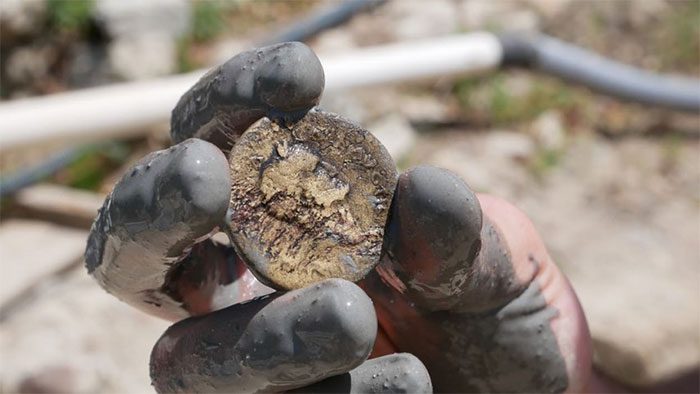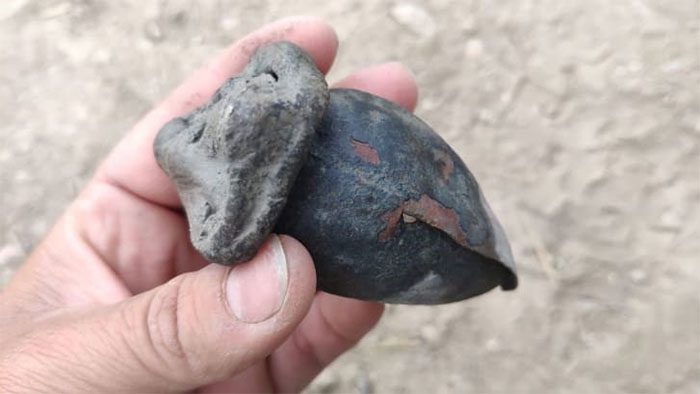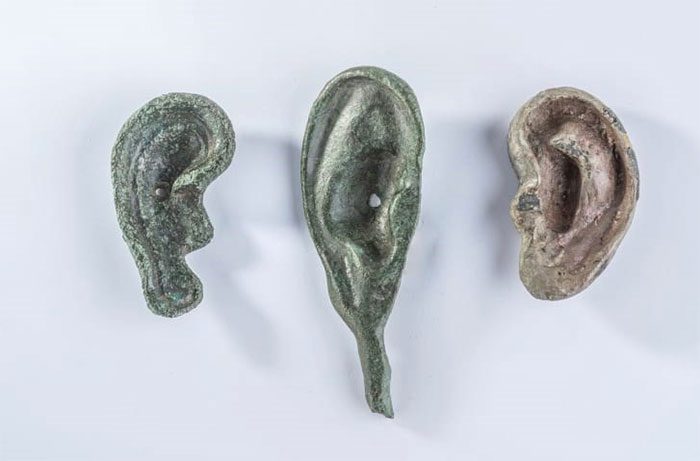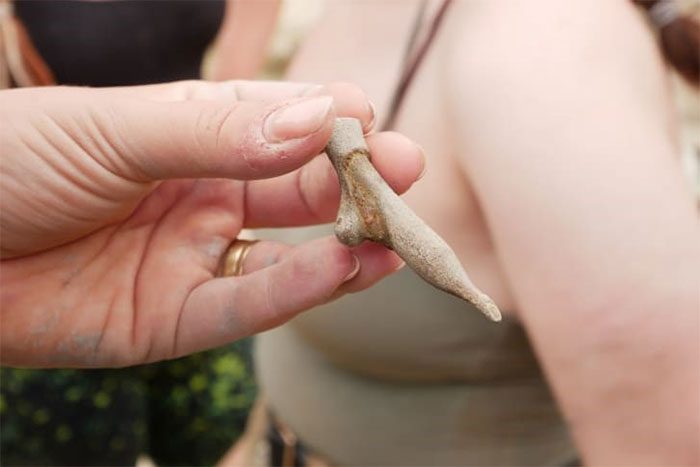The village of San Casciano dei Bagni, nestled in the lush Sienese countryside of Tuscany, is regarded by many as one of Italy’s premier hot springs, with its naturally bubbling waters flowing for over two thousand years.
The natural hot springs in Tuscany are a network of sacred pools established by the ancient Etruscans around the 4th century BC, later transformed into luxurious retreats by the ancient Romans during an era when health and faith were deeply intertwined.
San Casciano serves as a geothermal hub with 40 hot springs, six of which are connected to a thermal reserve. The Etruscans chose this location to harness the healing power of the water, which is rich in minerals such as calcium and magnesium, as well as chloride and sulfate.

Archaeological artifacts found beneath the Tuscan hot springs. (Photo: CNN).
Archaeological Discoveries
Last week, archaeologists at the site unearthed a treasure trove of artifacts and relics, shedding light on the close connections between ancient civilizations in Italy and the concept of “water religion”, or the divine origins of the healing hot springs.
These rare items are believed to have been used as offerings to the deities – including what is referred to as the “fertility idol” excavated from the mud of the area. Additionally, 3,000 ancient coins were discovered, 700 of which were newly minted and still gleaming.
In the 2nd century AD, Roman Emperor Marcus Aurelius Carus tossed coins into the baths to honor the gods who watched over his health, as well as that of all Romans who visited San Casciano for thermal treatments.

Rare items believed to be used as offerings to the deities. (Photo: CNN).
Archaeologist Jacopo Tabolli, the scientific director of the excavation project, stated: “What makes this site unique in the entire Mediterranean is its exceptional state of preservation, and the evidence it provides about how hot water was considered a healing agent under divine protection.”
“The quantity and quality of the artifacts unearthed are astonishing – we knew something was buried underground, but we did not expect such remarkable finds,” he emphasized.
The excavation site currently features a Etruscan pool that is 11 meters long and 5 meters deep, known as the “great bath”, along with five smaller Roman baths where hot water still flows at a rate of approximately 2,000 gallons per minute.
There are remnants of fountains and statues, along with travertine altars dedicated to deities of prophecy and healing, including Apollo, the goddess of fertility, Isis, and Fortuna Primigenia, the goddess of childbirth.

The quantity and quality of the artifacts unearthed are astonishing. (Photo: CNN).
“The Sacred Mountain”
The local people of San Casciano have long referred to this site as a “sacred mountain,” Tabolli noted, citing a report from a doctor around the 16th century mentioning the presence of ancient buildings and a fountain.
A geophysical survey conducted by Tabolli’s team in 2019 revealed the presence of structures on the springs. The following year, ancient columns were discovered protruding from a bush, prompting excavation work to begin.
The ancient natural hot springs of San Casciano functioned like a wellness clinic, where visitors sought respite from respiratory issues or joint pain.
For many, soaking in the waters alleviated their aches, prompting them to toss offerings into the bubbling pools to thank the gods for their healing. These offerings included twigs, fragrant pine cones, and fruits such as peaches – items that have been recovered in a well-preserved state thanks to the layers of mud covering the area.

Some artifacts sculpted in the shape of feet, hands, and ears in miniature bronze. (Photo: CNN).
Some artifacts sculpted in the shape of feet, hands, and ears in miniature bronze have also been excavated. These were left as thanks to the gods for healing specific body parts or to draw attention to the prayers of mortals in pain.
Health rituals performed at the hot springs included specific ceremonies related to pregnancy and childbirth.
A restored statue of a naked infant leads archaeologists to believe that ancient women visited San Casciano both during pregnancy and after giving birth in hopes of safeguarding their children’s health.
According to Tabolli, the number of coins made of bronze, silver, and orichalcum – a precious metal believed by the Romans to possess mystical powers – found in the great bath represents the largest collection of ancient coins associated with hot springs in the Mediterranean, and it is also a unique collection due to their perfectly preserved state. The coins have retained their original colors thanks to the chemical properties of the water and the mud covering them, which prevents oxidation.
Tabolli remarked: “They still have bright shiny brown and bright yellow colors – such vibrant hues have never been found in any excavation site.” “It’s a miracle.”





















































